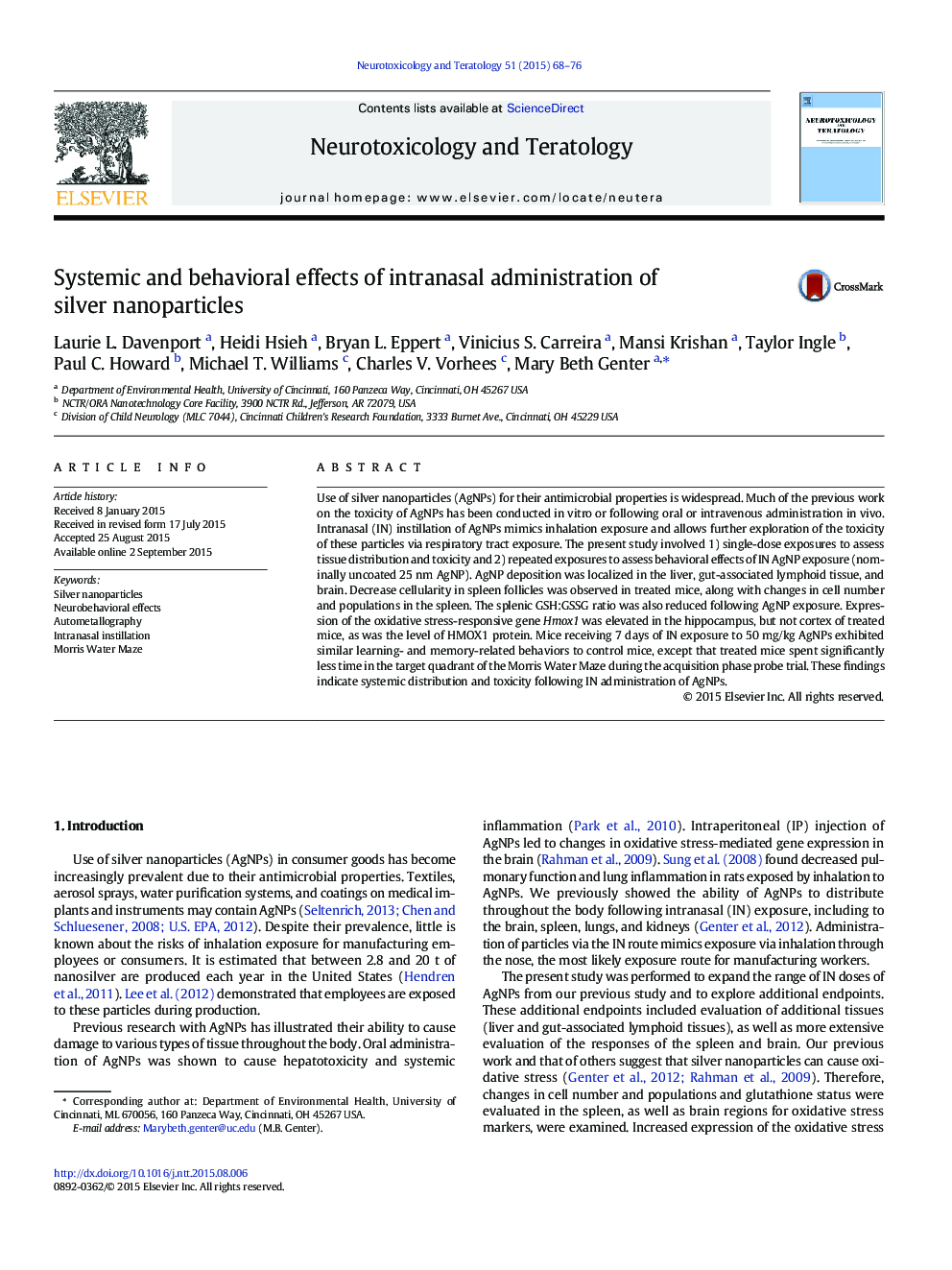| Article ID | Journal | Published Year | Pages | File Type |
|---|---|---|---|---|
| 2590894 | Neurotoxicology and Teratology | 2015 | 9 Pages |
•Intranasally-administered silver nanoparticles (AgNP) are deposited in the brain.•Intranasally-administered AgNP caused induction of Hmox1,in the hippocampus.•Neurobehavioral studies in mice treated with AgNP showed minor neurotoxic effects.•Intranasal AgNP reduced spleen cell populations and GSH:GSSG ratio.
Use of silver nanoparticles (AgNPs) for their antimicrobial properties is widespread. Much of the previous work on the toxicity of AgNPs has been conducted in vitro or following oral or intravenous administration in vivo. Intranasal (IN) instillation of AgNPs mimics inhalation exposure and allows further exploration of the toxicity of these particles via respiratory tract exposure. The present study involved 1) single-dose exposures to assess tissue distribution and toxicity and 2) repeated exposures to assess behavioral effects of IN AgNP exposure (nominally uncoated 25 nm AgNP). AgNP deposition was localized in the liver, gut-associated lymphoid tissue, and brain. Decrease cellularity in spleen follicles was observed in treated mice, along with changes in cell number and populations in the spleen. The splenic GSH:GSSG ratio was also reduced following AgNP exposure. Expression of the oxidative stress-responsive gene Hmox1 was elevated in the hippocampus, but not cortex of treated mice, as was the level of HMOX1 protein. Mice receiving 7 days of IN exposure to 50 mg/kg AgNPs exhibited similar learning- and memory-related behaviors to control mice, except that treated mice spent significantly less time in the target quadrant of the Morris Water Maze during the acquisition phase probe trial. These findings indicate systemic distribution and toxicity following IN administration of AgNPs.
